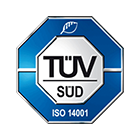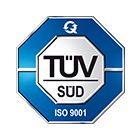WHY A RESTRAINT SYSTEM?
The first, but not the most important, reason is the regional as well as pan-European legal requirements for ensuring safety in connection with building and using structures.
But it is also mainly because falls from a height are one of the main causes of fatal accidents at work, especially in the construction industry, where 1,300 deaths occur in Europe every year. The human, financial and economic impact of these injuries, as well as the loss of life they cause, is not acceptable: falls cause fatalities and a range of serious injuries, including possible total loss of movement (tetraplegia), various types of disorders and partial disability. These injuries limit the ability of workers to re-enter the work process and lead to a significant reduction in income. Such accidents can also adversely affect the public’s perception of the sectors concerned and, as a result, it may be more difficult to recruit young people and retain older workers.
Protecting workers from the risks associated with the use of work equipment is very important for safety and health. All work equipment is designed and manufactured in accordance with the basic requirements for safety and health protection. However, their use may lead to risks that the employer must assess and take into account in advance, depending on the type of work, the specific conditions at the workplace and the qualifications of the workers using the equipment. In this way, it is possible to prevent risks to the workers’ health and life from the uncontrollable effects of improper use of work equipment or external influences that could disable or reduce the level of safety of the equipment as designed, manufactured and sold.
It should be emphasized that compliance with the essential requirements relating to work equipment and the minimum requirements of Directive 2001/45/EC does not guarantee compliance with applicable national rules.
This is Directive 2001/45/EC of the European Parliament and of the Council as of 27 June 2001 amending Council Directive 89/655/EEC concerning the minimum safety and health requirements for the use of work equipment by workers at work, OJ L 195, 19.7.2001, p. 46.

